

5 Strategies to Deepen Student Collaboration. Most of us who teach believe in the power of collaboration and frequently engage our students in collaborative activities. But how many times have we put students in groups only to watch them interact with their laptops instead of each other? Or pursue their own individual goals instead of consult with one another? Or complain about a lazy teammate? Promoting real collaboration is hard to do well—and it doesn’t just happen on its own.
If we want real collaboration, we need to intentionally design it as part of our learning activity. Where the Wonders of Learning Never Cease. How to: Inquiry. Will you ever just walk into class and ask, "Okay, what do you want to study today?
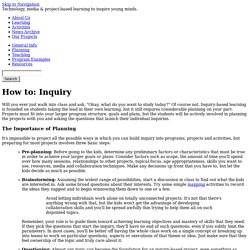
" Of course not. Inquiry-based learning is founded on students taking the lead in their own learning, but it still requires considerable planning on your part. Projects must fit into your larger program structure, goals and plans, but the students will be actively involved in planning the projects with you and asking the questions that launch their individual inquiries. What is Inquiry-Based Learning? Introduction to Inquiry Based Learning. 35 Educational Resources to Encourage Inquiry & Inventive Thinking.
This is a sponsored post.

I’ve scoured the internet, including all of my favourite social media sites, to bring you a fantastic collection of online inquiry and inventive thinking resources that I know will inspire and motivate both you and your students. The collection includes Lego, science, practical activity ideas, engineering, videos, animation, technology and a tonne of fun facts – so there is sure to be something for everyone! Sean Kenney Lego Certified Master Builder’s YouTube Channel: Best-selling author and artist, Sean Kenney, uses LEGO toys to build anything and everything you can imagine. Inquiry-based Learning: Explanation. What is inquiry-based learning?
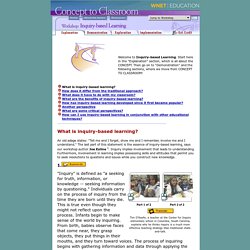
An old adage states: "Tell me and I forget, show me and I remember, involve me and I understand. " The last part of this statement is the essence of inquiry-based learning, says our workshop author Joe Exline 1. Secondgradealicious: Five for Friday??? Could it be?
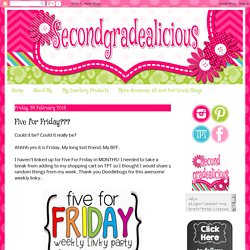
Could it really be? Ahhhh yes it is Friday. My long lost friend. Relief Teaching Ideas. This is an activity that is usually used in maths but I think it also works really well as a revision tool!
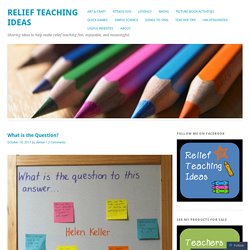
Simply write an answer on the board, students then write questions to match the answer on post it notes. They can read through their notes or handouts to help them. They can stick their questions around the board. Alternatively, they can write the answer in their books & list questions under or around it. You can use this activity to: – review a person, place or thing – look at a character or setting of a book the class has read – practice number sense (write a number as the answer & students need to write equations to equal that number.)
Teaching Elementary Reading with Inquiry Circles. Primary Years Programme (PYP) Information / Inquiry Cycle. The Go To Teacher: Inquiry Circles. We have started our Nonfiction Inquiry Unit and I am beside myself!
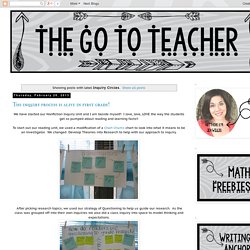
I love, love, LOVE the way the students get so pumped about reading and learning facts!! To start out our reading unit, we used a modification of a Chart Chums chart to look into what it means to be an investigator. We changed Develop Theories into Research to help with our approach to inquiry. After picking research topics, we used our strategy of Questioning to help us guide our research.